In our Supermicro SYS-510T-MR review, we are going to see how this new Rocket Lake-E server fares. A few weeks ago we covered the Intel Xeon E-2300 series launch. This was a big announcement since it finally brought PCIe Gen4 to the entry server market. Perhaps just as exciting, this server is powered by the Supermicro X12STH-SYS motherboard. As such, the SYS-510T-MR is our first server review where we get to take a look at this new line.
Supermicro SYS-510T-MR Hardware Overview
As we have been doing with server reviews, we are going to split this into an external then an internal hardware overview.
Supermicro SYS-510T-MR External Hardware Overview
The SYS-510T-MR is a 1U server that is just under 20″ or 507mm deep. For many low-cost colocation racks, this is ideal since shorter depth servers and racks mean more nodes on the data center floor.
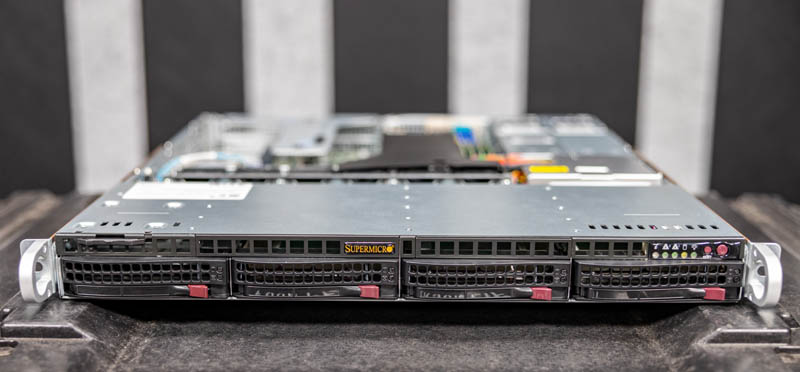
The front of the system has four 3.5″ bays and a place for a slim optical drive. This 4x 3.5″ configuration is very popular in the segment. Something we will quickly note is that since the current generation of Xeon E-2300 series has limited PCIe lanes, the front is SATA/ SAS only. We would expect SAS only with a HBA or a RAID controller but most of the systems we expect will use SATA.

Here, 3.5″ is popular because it can handle a mix of 3.5″ and 2.5″ drives as you can see here with the 2.5″ adapter. In many of these servers, 3.5″ drives are used for capacity or low-cost capacity, and sometimes 1-2 2.5″ drives will be used for boot. This configuration simplifies deployment for dedicated hosting providers.

The rear of the system has a fairly simple layout, but also some differences compared to other entry-level servers.
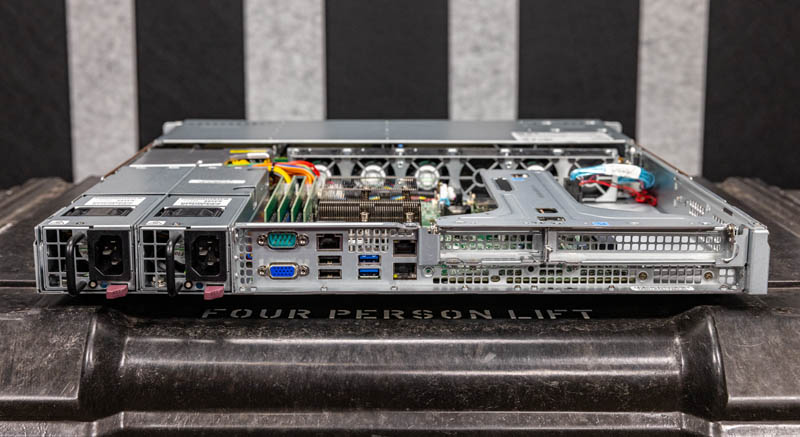
One of the big differences, and the reason behind the “-MR” instead of being a “-M” server is that there are redundant power supplies. These power supplies are 80Plus Platinum 400W units.
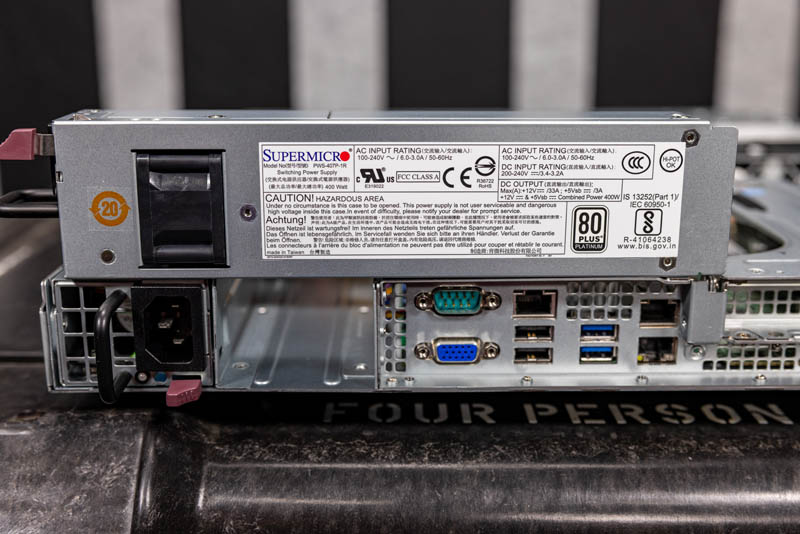
As a quick note, because this is an entry Xeon server, the redundant power supplies utilize a power distribution board instead of the power supplies connecting directly to the motherboard as we see in the company’s Ultra line. This is simply a segmentation/ cost difference.
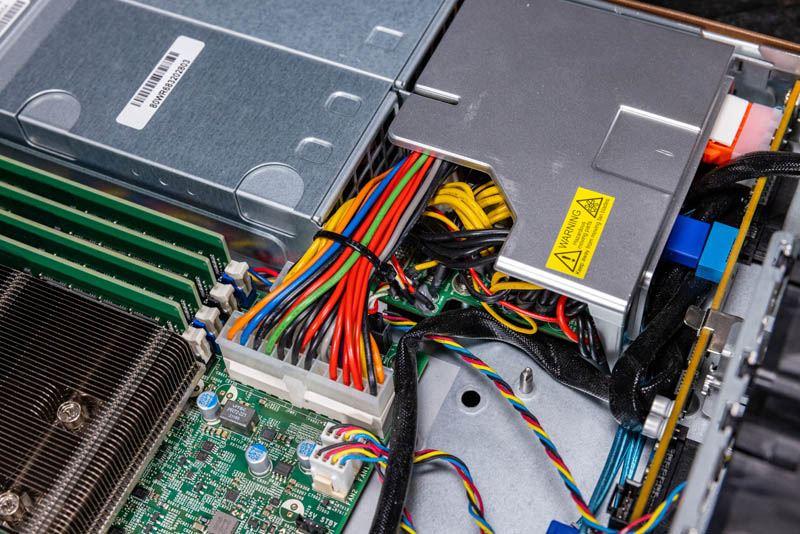
One will notice there are PCIe expansion slots on the rear of the system. There are actually two. These are PCIe Gen4 slots and one is an x16 full-height slot while the other is an x8 low profile slot. The configuration is either x16/x0 or x8/x8 so one can choose how to utilize the sixteen available PCIe Gen4 lanes. That PCIe Gen4 support is one of the major features of the Xeon E-2300 series platform.
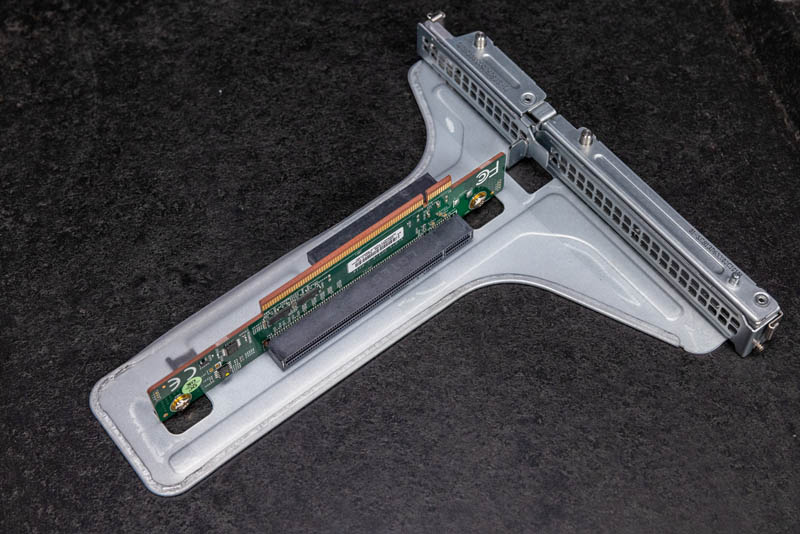
Since the internal overview is longer, we are also going to show the other slot here. There is a PCIe Gen3 x4 slot in an x8 connector. What you will notice is that there are standard mounting brackets for a low-profile PCIe card on the rear edge of this chassis as well. Supermicro uses this slot for an internal SAS HBA or RAID controller. One can install one of those cards without having to use a PCIe Gen4 slot off of the riser. The neat feature is that the system has these card supports built into the chassis as if the chassis was the expansion slot faceplate.
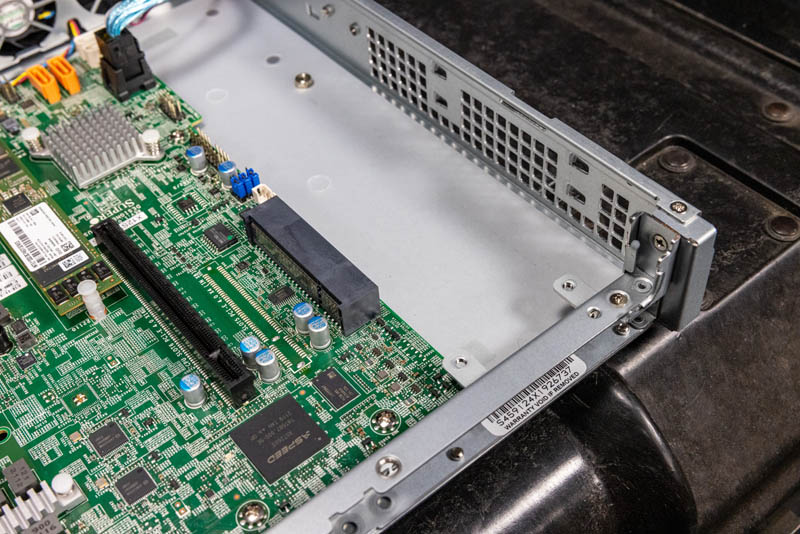
Rounding out I/O on the rear, there is a serial console port and a VGA port. We also get pairs of USB 2.0 and USB 3.2 Gen1 ports on the rear.

There is a dedicated management port on the rear for out-of-band management. We also get two Intel i210-at powered 1GbE ports. Some Xeon E-2300 series offerings have moved to 10Gbase-T in this generation, but that adds costs and does not help if a facility is using SFP+ or higher speed networking so this is a cost optimization on the platform.
Next, let us get inside the system to see how it works.





We saw an idle of around 33kW. With two 400w power supplies?
33w?
How much idle watts with 1 psu, 1 sata ssd, 2 dimms, no network, no pcie, no fans connected?